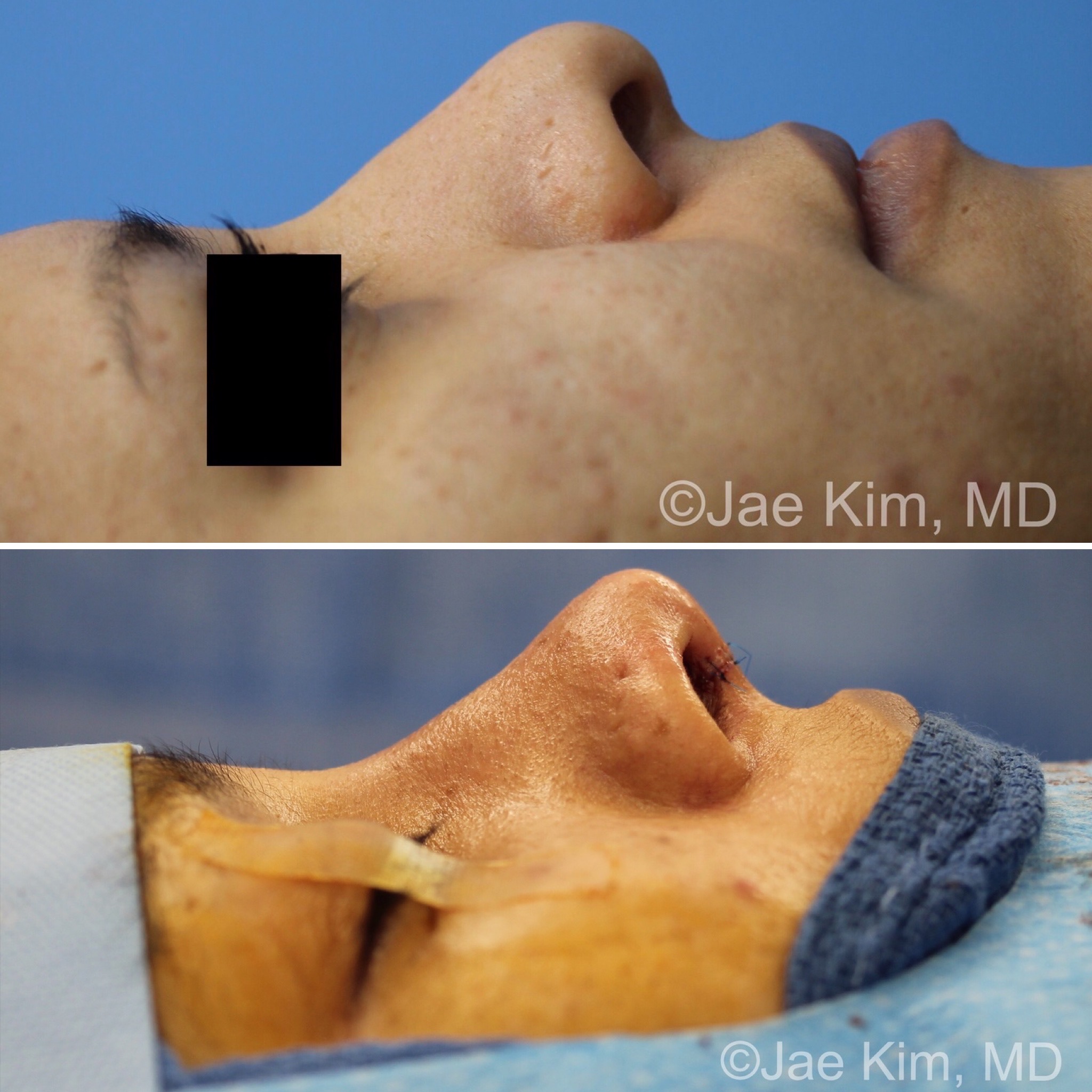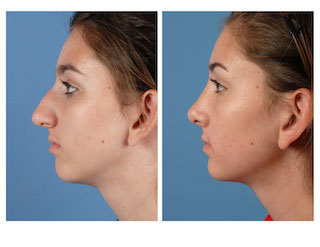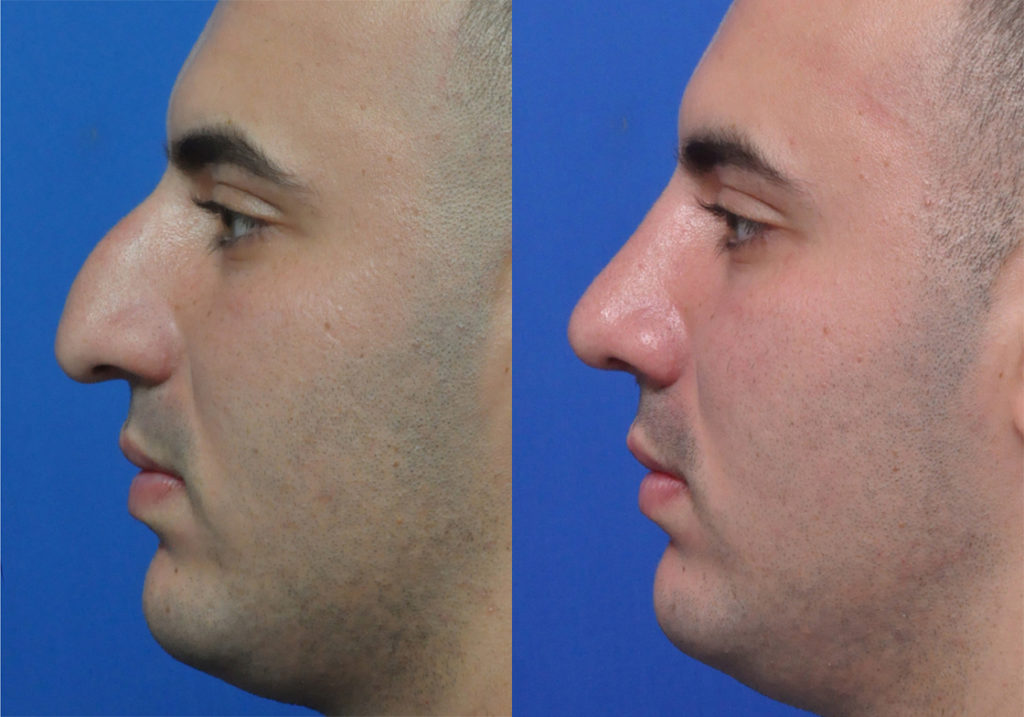The 3-Minute Rule for Rhinoplasty Austin
Table of Contents5 Easy Facts About Rhinoplasty Surgery Austin ExplainedRhinoplasty Surgery Austin - QuestionsEverything about Austin RhinoplastyA Biased View of Rhinoplasty Surgery Austin
Ultrasonic rhinoplasty utilizes piezoelectric instruments (scrapers rasps, saws) that impact just the bones and the stiff cartilages through ultrasonic vibrations, as the instruments used in oral surgery. Making use of piezoelectric instruments requires a more extended technique than the isial one, permitting to envision the entire bony vault, to reshape it with rhinosculpture or to activate and support bones after regulated osteotomies.Generally, the cosmetic surgeon first separates the nasal skin and the soft tissues from the osseo-cartilagenous nasal structure, and after that reshapes them, sutures the incisions, and uses either an external or an internal stent, and tape, to incapacitate the recently rebuilded nose, therefore assist in the recovery of the surgical cuts.

To tape-record the "before-and-after" physiognomies of the nose and the face of the client, the particular visual viewpoints needed are pictures of the nose seen from the anteroposterior (front-to-back) perspective; the lateral view (profiles), the worm's- eye view (from below), the bird's- eye view (overhead), and three-quarter-profile views. Picture A. Open nose job: At nose job's end, after the plastic cosmetic surgeon has actually sutured (closed) the incisions, the fixed (new) nose will be dressed, taped, and splinted stable to allow the undisturbed healing of the surgical incisions.
Picture B. Open rhinoplasty: The brand-new nose is prepared with paper tape in order to receive the metal nasal-splint that will incapacitate it to keep its correct shape as a new nose. Picture A. Open rhinoplasty: Pre-operative, the guidelines (purple) guaranteed the cosmetic surgeon's precise incisions in cutting the nasal defect correction plan.
The Only Guide to Rhinoplasty Surgery Austin

Open nose surgery: After the initial taping of the nose, a personalized, metal nasal-splint, developed, cut, and formed by the surgeon, is emplaced to debilitate and secure the tender tissues of the new nose throughout convalescence. Photo D. Open rhinoplasty: The taping, emplacement of the metal splint, and dressing of the brand-new nose complete the nose job procedure - austin rhinoplasty.
Photo 2. Open nose job: The best lower lateral cartilage (blue) is exposed for correction. Photo 1. Open nose job: The columellar incision marked as a red-dot guideline, will help the surgeon in the accurate suturing of the nose. Photograph 4. Rhinoplastic correction: A nasal-hump excision strategy; the black line defines the dorsal plane of the new nose.
Open nose job: the nasal idea is sutured to narrow the nose. Picture 1. Open nose surgery: The incisions are endonasal (in the nose), and therefore are concealed. The skin-incision to the columella aids the plastic surgeon in specifically suturing to hide the scarother than for the columellar cut (red-dot standard) throughout the nasal base.
Picture 2. Open rhinoplasty: The nasal interior. The scissors suggest the lower lateral cartilage (blue), which is one of the wing-shaped cartilages that adhere the suggestion of the nose. The jagged red delineation shows the location of the columellar incision. When the skin has been lifted from the bone-and-cartilage structure, the cosmetic surgeon carries out the nasal correction tasks.
Not known Facts About Rhinoplasty Surgery Austin
Open nose moved here job: To narrow the idea of a too-wide nose, the cosmetic surgeon first figures out the cause of the excess nasal width. The suture being emplaced will narrow the tip of the nose. The red delineation suggests the edge of the nose-tip cartilage, which is narrowed when the cosmetic surgeon tightens the folded cartilage peak.
Photograph 4. Nasal hump excision: The black delineation suggests the preferred nose-reduction outcome: see this page a straight nose. The nasal hump is bone (red) above the scalloped grey line, and cartilage (blue) below the scalloped grey line. The cosmetic get redirected here surgeon cuts the cartilage portion of the bulge with a scalpel, and chisels the bone portion with an osteotome (bone chisel).

Although many revision rhinoplasty treatments are "open method", such a correction is more technically complicated, typically due to the fact that the nasal support structures either were deformed or damaged in the main nose surgery; therefore the surgeon must re-create the nasal assistance with cartilage grafts collected either from the ear (auricular cartilage graft) or from the rib cage (costal cartilage graft).
In reconstructive nose job, the flaws and deformities that the plastic surgeon encounters, and must bring back to typical function, form, and look consist of broken and displaced nasal bones; interfered with and displaced nasal cartilages; a collapsed bridge of the nose; hereditary flaw, injury (blunt, permeating, blast), autoimmune condition, cancer, intranasal drug-abuse damages, and failed main rhinoplasty results.
What Does Austin Rhinoplasty Do?
When cartilage is interrupted, suturing for re-suspension (structural support), or the usage of cartilage grafts to camouflage an anxiety enable the re-establishment of the regular nasal contour of the nose for the patient. When the bridge of the nose is collapsed, rib-cartilage, ear-cartilage, or cranial-bone grafts can be utilized to restore its structural stability, and therefore the visual continuity of the nose.